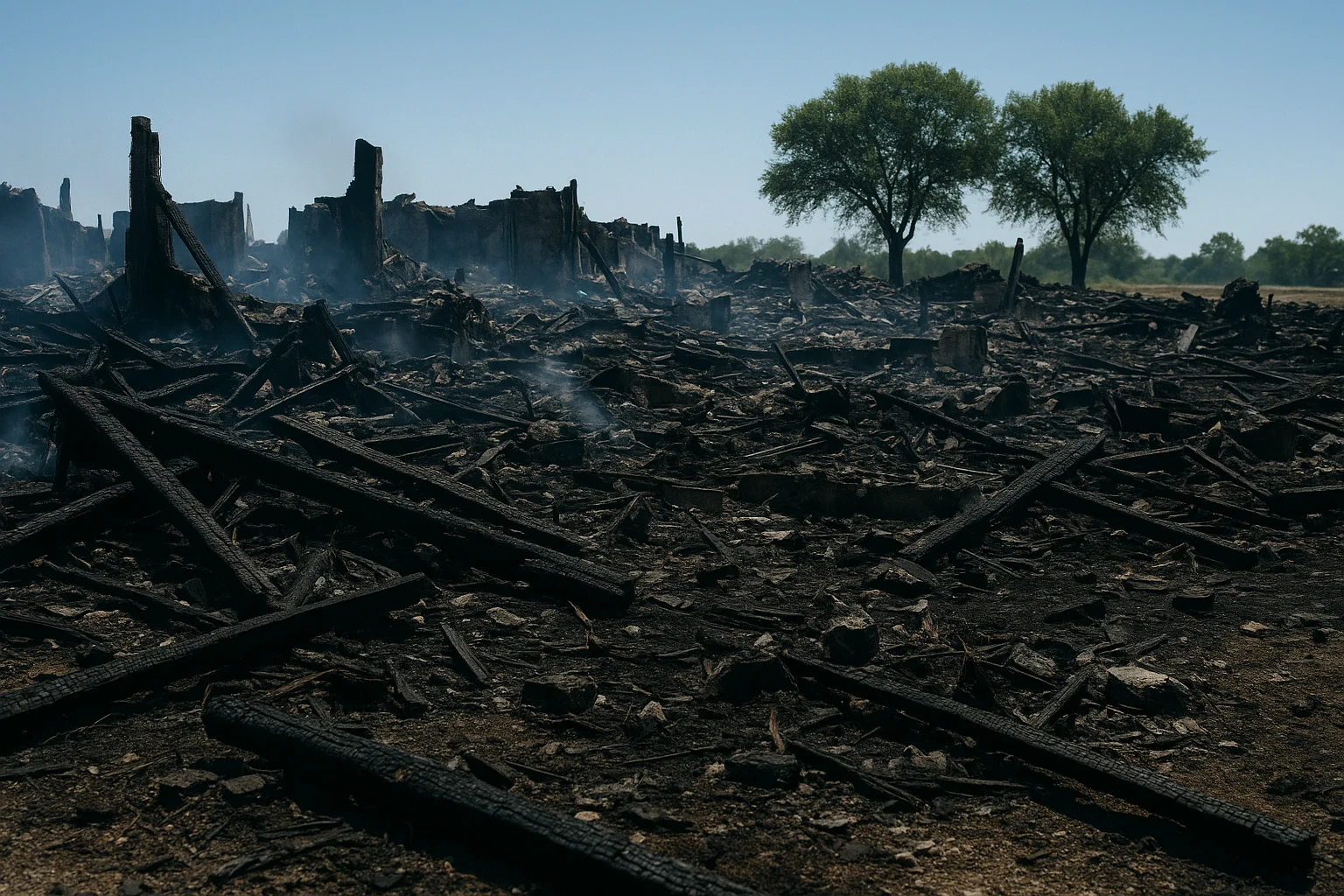
The Waco Siege
by: The Calamity Calendar Team
February 28, 1993
A Storm on the Horizon
The Texas sky on that late February day in 1993 stretched wide and open, blue as an ocean. It was under this sky that a storm was quietly brewing, not one of nature's making but of human design, at a place called the Mount Carmel Center just outside Waco. Here lay the compound of the Branch Davidians, a religious sect led by a charismatic and, to many, enigmatic figure named David Koresh. It was a storm brought on by beliefs and distrust, whispered rumors of stockpiled weapons, shadowed suspicions of abuse and a federal agency with its patience worn thin. As it unfolded, the world would watch with a mixture of curiosity, confusion, and horror.
Seeds of Tension
The Branch Davidians, a splinter group from the Seventh-day Adventist Church, had long settled at Mount Carmel. By the late 20th century, under Koresh's leadership, their apocalyptic visions intensified. Members saw Koresh not merely as a preacher but perhaps the final prophet of their faith. His teachings, steeped in the Book of Revelation, foretold a divine judgment that seemed to echo ominously through the compound walls.
But it wasn't just spiritual matters concerning external eyes. Reports trickled out, hinting at an alarming cache of weapons and murmurs of child endangerment. These tales reached the ears of the Bureau of Alcohol, Tobacco, and Firearms (ATF), casting a long shadow that lingered over the already volatile grounds of Mount Carmel.
A Raid Erupts into Chaos
On February 28, 1993, the ATF intended to pierce this shadow with the light of a search warrant, to ascertain the truth of those claims. The agents approached, serious and determined. But in a place so awash with prophecy and fear, the arrival of federal forces was interpreted less as a mandate of law and more a harbinger of a celestial battle.
It began with gunfire that erupted between the agents and the inhabitants of the compound—an unexpected, violent crescendo. When the smoke cleared, four ATF agents and six Branch Davidians lay dead. What was meant to be a swift inspection had spiraled into bloodshed, setting the stage for one of the longest and most dramatic standoffs in American history.
The Siege
As March began, so too did the siege. The FBI took command, its Hostage Rescue Team tasked with bringing an end to the spiraling situation. Negotiators attempted to bridge the growing chasm between authorities and those within the compound, a task that proved as complex as it was critical. Calls between Koresh and negotiators stretched into uncomfortable hours, filled with theological discourse and promises of redemption.
Thanks for subscribing!
While some members left the beleaguered Mount Carmel, many stayed, their decision rooted in loyalty to Koresh or perhaps fear of leaving the safety of what they thought their spiritual sanctuary. Days turned into weeks, and outside the spotlight of public scrutiny intensified. People found themselves asking: Who was David Koresh? What drove the Branch Davidians to such defiance?
The Inferno
By mid-April, the situation had grown desperate. On April 19, 1993, with all reasonable negotiations exhausted, the FBI made a perilous decision—they would force the Branch Davidians' hand with tear gas, intending to draw them out of the compound.
Instead of emerging, the compound erupted into flames, a shocking inferno fueled by the wooden structure and, perhaps, desperation. The causes of the fire remain mired in controversy. Was it self-immolation, a final act of faith now desperate beyond words? Or was it an unintended consequence of the FBI's final assault? Seventy-six Branch Davidians, including Koresh, perished in the blaze.
A Nation in Debate
The ashes of Mount Carmel carried with them a heavier burden than just the charred remains of wood and stone. They symbolized a potent mix of tragedy and blame, confusion and criticism. Public opinion split: some viewed the government as overreaching, heavy-handed; others placed the weight of tragedy on Koresh's manipulation and willing congregation.
Legally and politically, the aftermath unfolded in conference rooms and courtrooms. Congressional hearings dissected each decision with the precision of a surgeon, aiming to heal the wound of public trust damaged by the events. Policy and procedure came under the microscope, creating ripples that impacted future engagements with ideological groups.
Lessons in the Ash
In the quiet aftermath, amid debates and reforms, the bigger questions lingered in the national consciousness. How far should government go in confronting secluded, impassioned religious groups? Could Mount Carmel have ended peacefully, or was it always fated to become a crucible for reform?
Today, the legacy of Waco remains an unsettling landmark in discussions of governmental authority and religious liberty. It serves as a powerful reminder of the human cost that can accompany decisions made quickly, beliefs held firmly, and the price of misunderstanding.
As we stand back and look upon the skeletal remains of Mount Carmel, the charred timbers set against that perpetual Texas sky, the lesson looms large: history here is not a simple tale of good or evil, but a complex story written in human motives and frailties, still offering more questions than clear-cut answers.
Stay in the Loop!
Become a Calamity Insider and get exclusive Calamity Calendar updates delivered straight to your inbox.
Thanks! You're now subscribed.